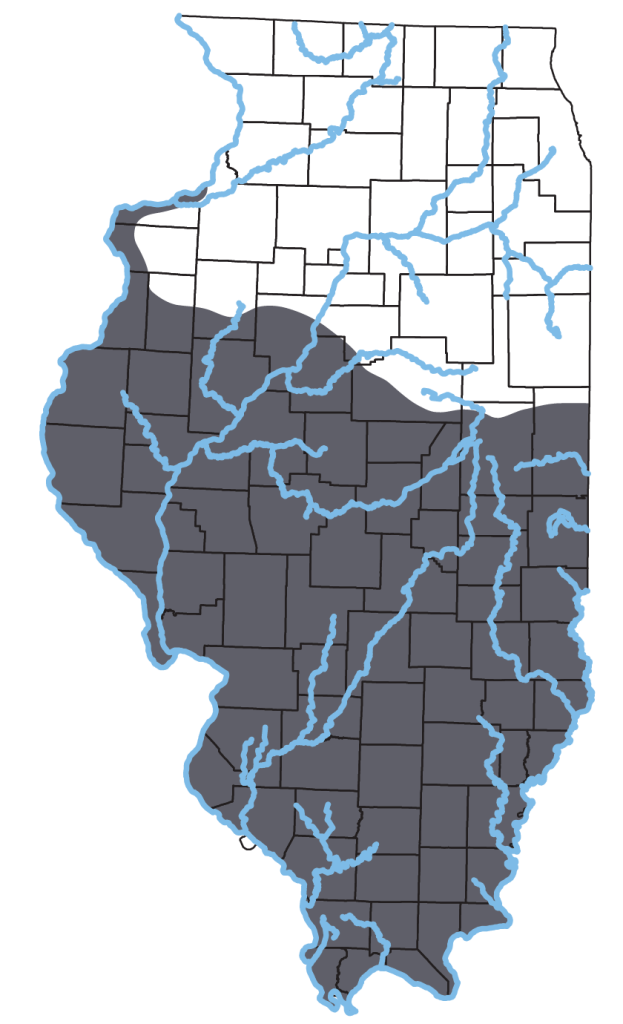Lampropeltis calligaster (Harlan, 1827)
Key Characters: Brownish back and sides marked with dark blotches; head not much wider than neck; back scales glossy smooth; anal plate not divided.
Similar Species: Milksnake, Gray Ratsnake, Great Plains Ratsnake, Foxsnake. See the Key to Snakes of Illinois for help with identification.
Subspecies: Three subspecies are currently recognized with only one, Prairie Kingsnake, L. c. calligaster known from Illinois.
Description: Long (up to 130 cm TL), slender snake with gray to brown back, and 40-64 brown or reddish brown blotches that have dark borders. Two alternating rows of dark spots on sides (some blotches may fuse). Some individuals uniform olive brown, a few striped. Belly cream or yellowish gray with dim dark markings. Young are more distinctly blotched and their bellies more clearly marked with black.
Habitat: Grasslands from high-quality remnant prairie to degraded brushy fields. Less common in heavily farmed black-soil prairie.
Natural History: May become active on warm days even in November and December. Active by day during spring and autumn, but becomes nocturnal during hot summer months. Mates soon after emerging from hibernation in April or May. Clutches of 7-20 eggs laid in midsummer hatch in August and September. Hatchlings are 25-30 cm TL. Diet includes small mammals, birds, amphibians, reptiles, and insects. Main predators are mammals and other snakes.
Status: Locally common in prairie remnants of the Southern Till Plain counties.
Etymology: Lampropeltis – lampros (Greek) meaning bright, brilliant, radiant; pelta (Latin) meaning small shield; calligaster – kalos (Greek) meaning beautiful; gaster (Greek) meaning stomach, belly.
Original Description: Harlan, R. 1827. Genera of North American Reptilia, and a synopsis of the species. Journal of the Academy of Natural Sciences Philadelphia. 5(2):317-372.
Type Specimen: Syntype: ANSP, now apparently lost.
Type Locality: “Missouri”
Original Name: Coluber calligaster Harlan, 1827
Nomenclatural History: Kennicott (1859) named Ophibolis evansi, which was later placed in synonymy of L. calligaster. Davis & Rice (1883) and Garman (1892) used Ophibolus calligaster.


